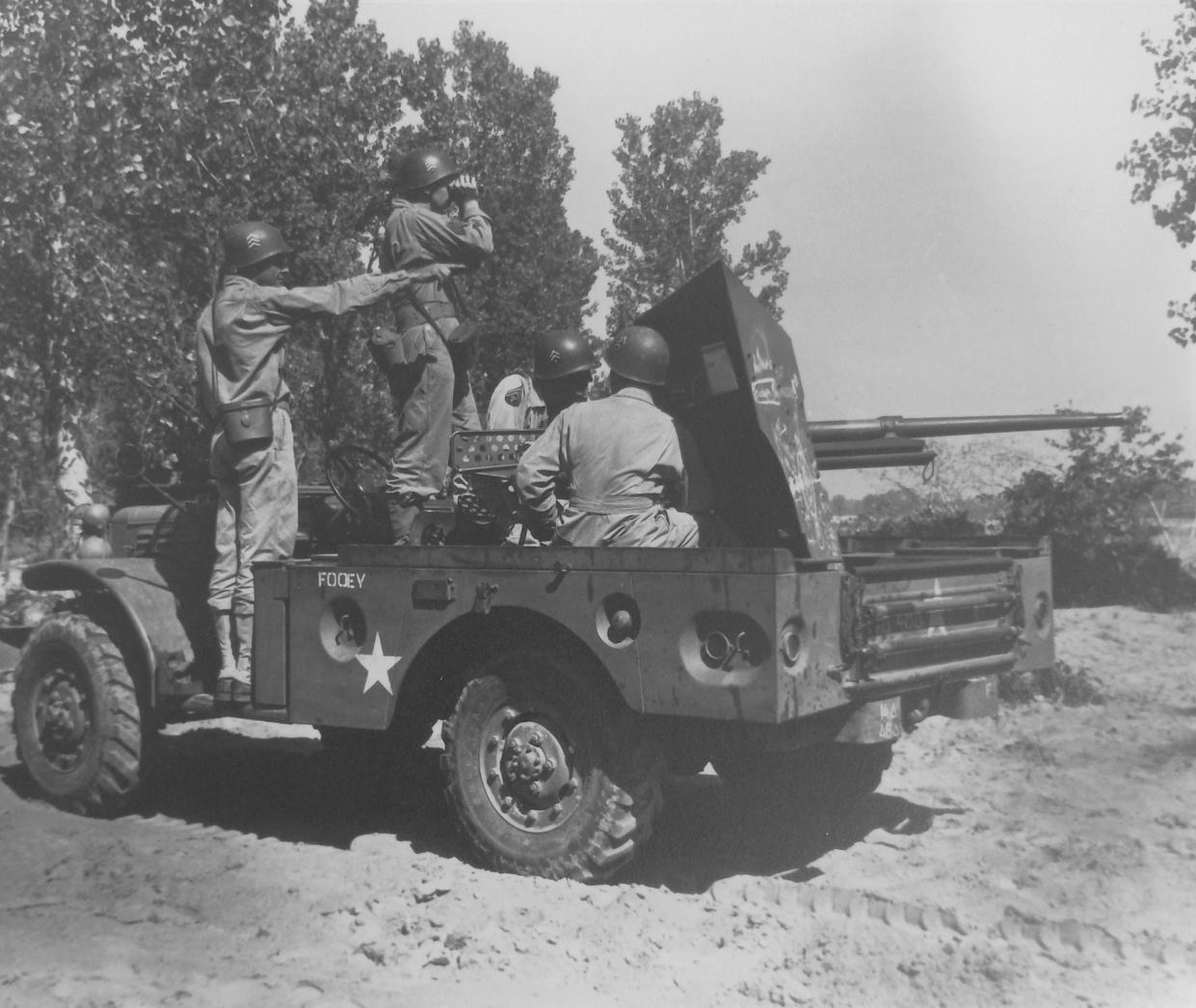Blue Collar Philosopher: Training was key to success of Chaffee’s 14th Armored Division

The U.S. Army’s 14th Armored Division was activated on Nov. 15, 1942, at Camp Chaffee. The division entered the war in October 1944 when it landed at Marseille in southern France. The 14th was assigned to the Seventh Army and fought in the campaigns of Ardennes-Alsace, Rhineland and Central Europe. Although lacking a nickname during the war, the 14th became known as the “Liberators” due to its wartime accomplishments.
The 14th is recognized as a liberating unit by the United States Army Center of Military History and the United States Holocaust Memorial Museum. In southern Germany they uncovered subcamps of the Dachau concentration camp. Later the division discovered three large forced labor camps housing thousands of Polish and Soviet civilians. They also liberated some 200,000 Allied prisoners of war as they captured multiple German prisoner of war camps.
In his farewell address to the troops of the 14th Armored Division Maj. Gen. A.C. Smith said, “Your success as a division in battle was in no small measure to the soundness of your basic training. I watched you develop from an untrained group of selectees to a highly skilled fighting machine ... I can truthfully say that you never let me or your commanders down.”
It is notable that Smith emphasized the unit’s training, as only two-and-a-half years earlier the division was raw, green and brand new.
The 14th Armored Division was activated at Camp Chaffee on Nov. 15, 1942, during a formal ceremony. New recruits had not arrived, so the formations were filled with officers and enlisted men transferred in from other units. During the activation ceremonies, the 86th Infantry Division’s band was bussed over from Camp Gruber in Braggs, Oklahoma, as the 14th’s band had not yet been formed.
The commanding general addressed the troops. “We are assembled today to create officially a new Armored Division. It is evidence of American determination that America will do her part in combating the forces of oppression and hatred which threaten her and other peace-loving people.”
Division historian Capt. Joseph Carter said, “It was a fine, glittery, shiny and exciting day."
The division was ready for the business of training for war. Maj. Gen. Prichard wanted all staff to organize for field training. “No better training can be had than to go into the field” he said.
The new recruits arrived throughout December 1942. Fifteen thousand men had to be trained. They also had to be fed, quartered and supplied. At the reception stations they received their first Army haircuts, shots and uniforms. They took aptitude tests to determine where their skills would best used. Most were assigned to combat jobs, but there was also a myriad of service and support roles to be filled.
Each received their entire basic and specialized training at Camp Chaffee. They learned basic soldiering skills: how to make a bed to Army standards, drill and ceremony, basic marksmanship, and radio protocol. They learned to throw hand grenades, how to quickly don a protective mask in the event of a gas attack, and military courtesy.
After basic training the specialized schools began. The new soldiers became tankers, infantrymen, combat engineers, tracked vehicle mechanics, supply clerks, cooks and finance specialists. “Through the thousand things being done the division took shape,” Carter said. “To fight, a man must know a variety of things”
Advanced training included road marches with soldiers carrying on his back everything he needed to live and fight. Troops learned map reading, aircraft identification, and field sanitation. They learned to drive tanks, halftracks, Jeeps and Army trucks. They learned maintenance on their vehicles, weapons, and dozens of other types of military equipment. Maintenance was a never-ending chore.
Live fire ranges operated for tanks, artillery, machine guns, mortars and hand grenades; training ranges for river crossings and chemical attacks. Much time was spent in the field with the heat, cold, rain and bugs.
The Army had a theory on how much time each soldier needed on each field of training. Each troop got 22 hours of map reading. In that time, he would learn to find his position on a map, get where he wanted to go, different terrain features, find good roads, and how to navigate difficult terrain.
Thirty-six hours of training were given on maintenance of a submachine gun. Three hours for military courtesy, four hours of pitching shelter tents and bivouac procedures, 50 hours of weapons training, and so on. Infantrymen were trained in bayonet fighting skills and medics were trained how to stop bleeding; signal men were trained in splicing and operations of the communications center.
With their training complete, they were assigned to the Seventh Army as a follow-on force to the Allied amphibious landings in southern France. They fought in well-known campaigns across Europe, earning their "Liberators" nickname.
According to their commanding general, it was training that turned them into the hard fighting unit that earned their honored title. That is a momentous tribute to Camp Chaffee’s contribution and legacy to the war effort and the liberation of Europe.
Lance Sumpter is a local writer, veteran and refugee of The Great Recession. He can be contacted at lsumpter00@gmail.com.
This article originally appeared on Fort Smith Times Record: Blue Collar Philosopher: Training was key to success of 14th Armored Division

